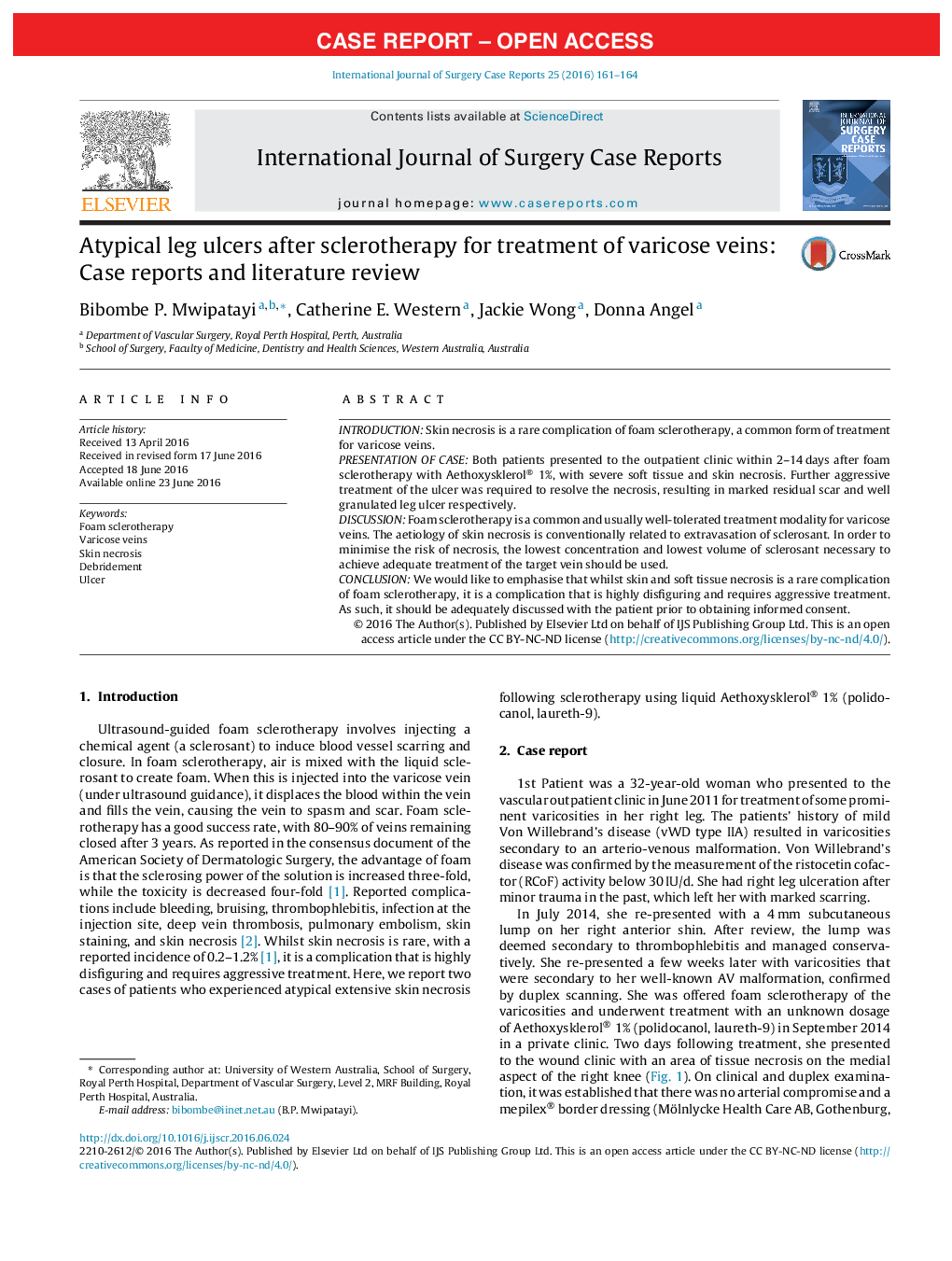| Article ID | Journal | Published Year | Pages | File Type |
|---|---|---|---|---|
| 4288430 | International Journal of Surgery Case Reports | 2016 | 4 Pages |
•Varicosity treatment (related to arteriovenous malformation) results in skin ulceration.•Skin necrosis is a serious but rare complication of sclerotherapy and healing period is usually prolonged.•Wound care management vary from a non-adhesive dressing to LFUD/Surgical debridement.•Awareness of this complication is essential since atrophic/hypertrophic scars are usually unavoidable and induce psychological trauma.
IntroductionSkin necrosis is a rare complication of foam sclerotherapy, a common form of treatment for varicose veins.Presentation of caseBoth patients presented to the outpatient clinic within 2–14 days after foam sclerotherapy with Aethoxysklerol® 1%, with severe soft tissue and skin necrosis. Further aggressive treatment of the ulcer was required to resolve the necrosis, resulting in marked residual scar and well granulated leg ulcer respectively.DiscussionFoam sclerotherapy is a common and usually well-tolerated treatment modality for varicose veins. The aetiology of skin necrosis is conventionally related to extravasation of sclerosant. In order to minimise the risk of necrosis, the lowest concentration and lowest volume of sclerosant necessary to achieve adequate treatment of the target vein should be used.ConclusionWe would like to emphasise that whilst skin and soft tissue necrosis is a rare complication of foam sclerotherapy, it is a complication that is highly disfiguring and requires aggressive treatment. As such, it should be adequately discussed with the patient prior to obtaining informed consent.
